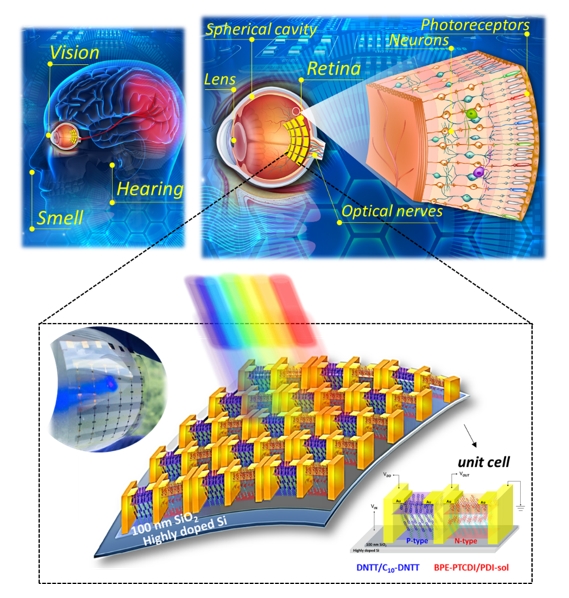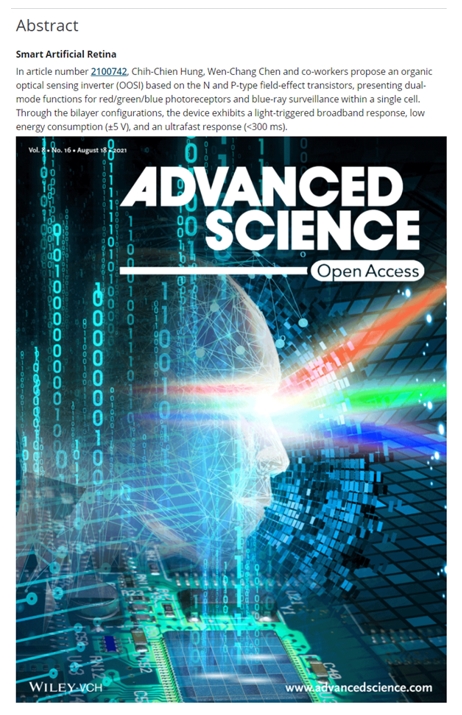Research Result of Smart Artificial Retina from NTU Chem. Eng. & ARC-GMST Selected as the Inside Front Cover of Journal ADVANCED SCIENCE
Research team of NTU Chemical Engineering Department and ARC-GMST (Advanced Research Center for Green Materials Science and Technology) published their research result of smart artificial retina development in the international material science journal ADVANCED SCIENCE on Aug. 18th, 2021. For the first time, an organic optical sensing inverter (OOSI) is used in the design of artificial retina (stated in Figure 1) with the advantage of high recognition resolution and ultra-fast response. Compared with the previous transistor-type or resistive memory types, OOSI only requires a very small voltage changing to generate meaningful electrical signals, which is more conducive to provide a rapid image recognition during the light transmitting, increasing the potential for artificial retina applications.
In addition, in terms of material selection, other than the good light memory response characteristics of rod-coil stated in the previous research in Adv. Mater. 2020, 2002638, OOSI element is endowed with the dual-mode functions of RGB photosensor and blue-ray surveillance in a single cell. This concept is firstly proposed in the artificial retina study and will becomes a potential development of smart component in the future. This research result is selected as the inside front cover of the journal ADVANCED SCIENCE (Adv. Sci.16/2021) contributed mainly by Dr. Chih-Chien Hung (洪誌鍵), Prof. Wen-Chang Chen (陳文章), and Prof. Dr. Yu-Cheng Chiu (邱昱誠) from Taiwan Tech.

Figure 1: Organic Optical Sensing Inverter (OOSI) Based Smart Artificial Retina Design

C.-C. Hung, Y.-C. Chiang, Y.-C. Lin, Y.-C. Chiu, W.-C. Chen, “Conception of a Smart Artificial Retina Based on a Dual-Mode Organic Sensing Inverter”, Adv. Sci. 2021, 8, 2100742. https://doi.org/10.1002/advs.202170097.